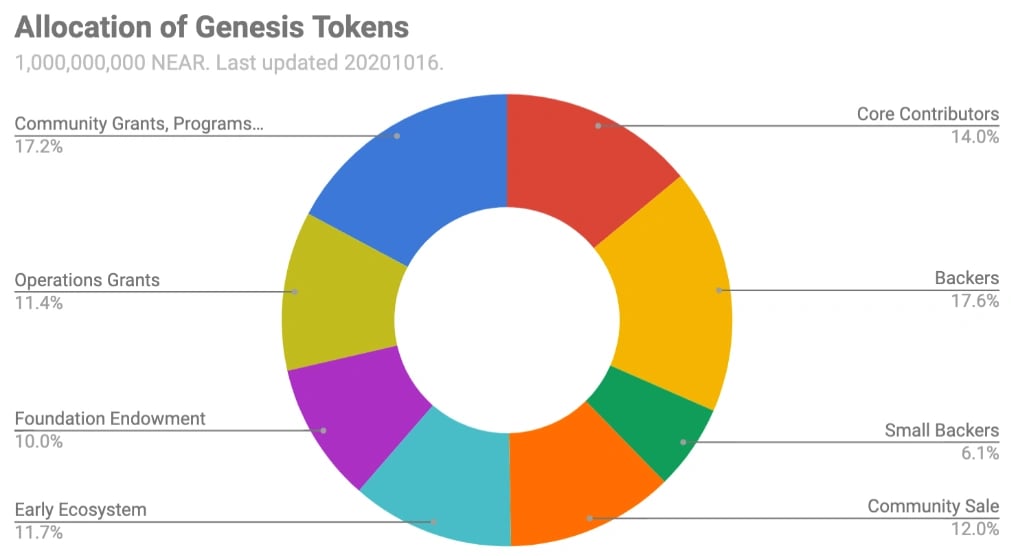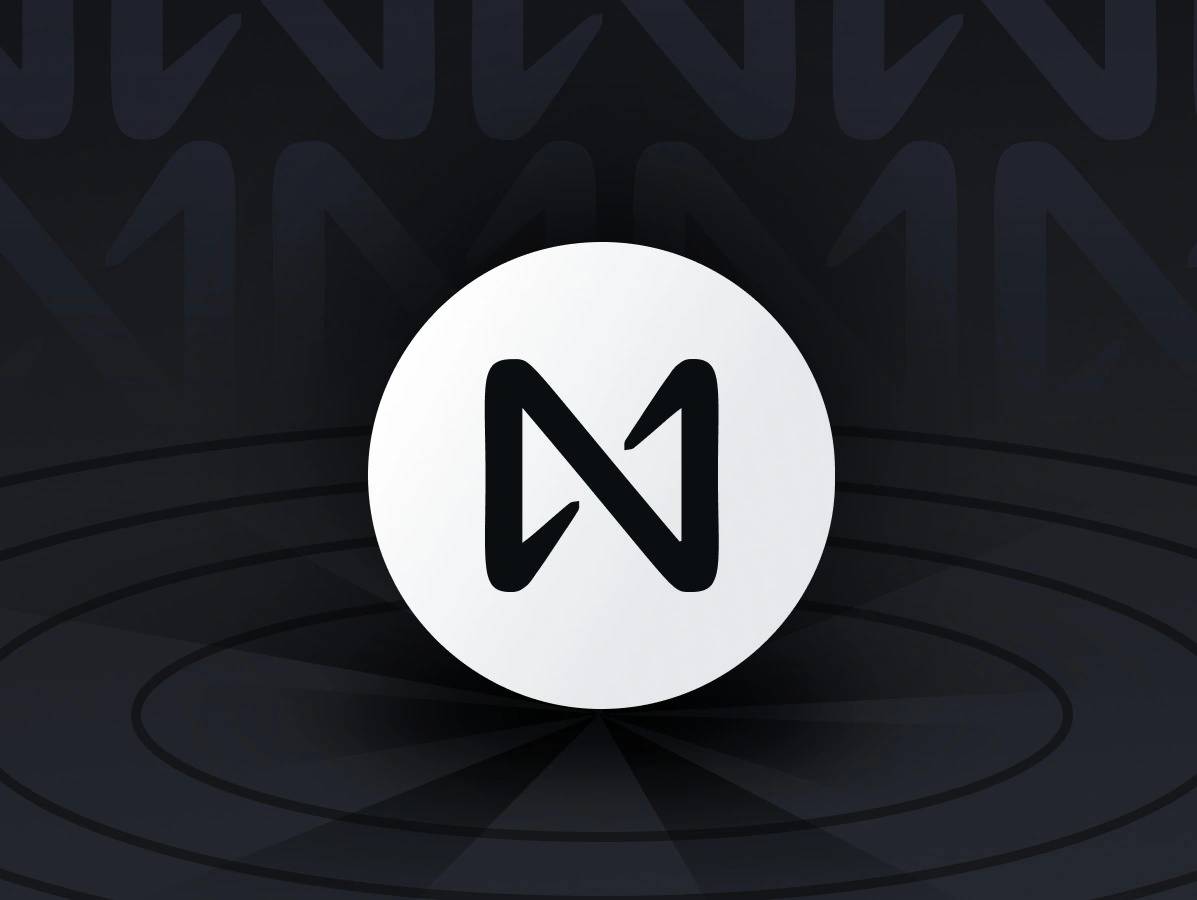订阅 wiki
Share wiki
Bookmark
NEAR (token)
NEAR (token)
NEAR 代币是 Near 协议 的原生加密货币,Near 协议是一个基于 权益证明 的 Layer 1 公共区块链,可以在其上构建去中心化应用程序。该代币用于支付交易费用和存储费用,持有者可以质押它来参与验证交易并达成网络共识。[1][2][3]
代币经济学
2020 年 4 月 22 日创世时创建了 1,000,000,000 个 NEAR 代币。它们的分配如下:[2] [4]
- 17.20% 用于社区赠款和项目,
- 14.00% 用于核心贡献者
- 12.00% 用于社区销售
- 11.76% 用于早期生态系统
- 11.40% 用于运营赠款
- 10.00% 用于基金会捐赠
- 17.6% 用于支持者,
- 6.1% 用于小型支持者。

每年发行额外供应量的 5% 用于支持网络作为 epoch 奖励,其中 90% 归验证者所有(总计 4.5%),10% 归协议金库所有(总计 0.5%)。交易费用的 30% 作为回扣支付给与交易交互的合约,而剩余的 70% 则被销毁。[1]
验证者
奖励
验证者每年获得总供应量约 5% 的固定 90% 的报酬(另外 10% 归协议金库所有)。奖励按 epoch 分配,每半天一次。每个验证者收到的奖励与其参与程度成正比。当验证者质押时,占用的席位通过简单的拍卖确定。每个 epoch 结束后,将根据产生的区块和块与预期产量相比来评估验证者。[7]
如果低于预期产量的 90%,则验证者被认为离线/不稳定,将不会获得任何奖励,并且将从即将到来的 epoch 验证中删除(即,强制取消质押)。在线状态至少达到 90% 的验证者将获得线性增长的奖励,在线状态达到 99% 或以上的验证者将获得 100% 的奖励。[7]
委托
验证者可以通过委托从第三方接收 $NEAR 进行质押。NEAR 协议通过智能合约启用委托。想要接受委托的验证者可以创建一个特殊合约,并允许不想运行其节点的用户将其 $NEAR 存入其中。通过这样做,存入该合约的资金可供其创建者用作其质押的一部分。[7]
效用
保护网络
NEAR 协议是一个权益证明 (PoS) 网络,这意味着对各种攻击的抵抗来自质押 NEAR。质押的 NEAR 代表去中心化的服务器基础设施,该基础设施维护网络并处理 NEAR 上应用程序和用户的交易。提供此服务获得的奖励以 NEAR 形式接收。[8]
提供记账单位
NEAR 用于 NEAR 基础设施上的价格计算和存储。网络以 NEAR 收取交易费用以处理更改和交易。[8]
交换媒介
NEAR 可用于在 NEAR 应用程序和帐户之间转移价值。应用程序可以使用 NEAR 来收取各种功能的费用,例如访问数据或其他复杂交易。实体还可以轻松地相互交换 NEAR,而无需受信任的第三方来清算和结算交易。[6][8]
Bitwise 提议基于 NEAR 的 ETF
2025 年 5 月,Bitwise Asset Management 向美国证券交易委员会 (SEC) 提交了一份监管文件,请求批准推出 Bitwise NEAR 数字资产信托。拟议的基金旨在通过现货交易所交易基金 (ETF) 结构直接接触 NEAR 代币,即 NEAR 协议 区块链 的原生资产。
该申请是在与 NEAR 代币相关的交易活动增加和价格上涨期间提交的。根据该文件,该信托将允许机构投资者在不直接托管或处理资产的情况下访问 NEAR。
Bitwise 的提案概述了几个网络功能,这些功能有助于 NEAR 目前在其生态系统中的使用。这些功能包括其作为交易费用媒介、协议治理工具和去中心化应用程序部署组件的功能。该文件还引用了技术功能,例如对基于 WebAssembly 的智能合约的支持、链抽象机制和帐户聚合作为协议运营架构的一部分。
截至提交时,美国证券交易委员会尚未发布正式回应或审查时间表。该提案反映了人们对与数字资产相关的受监管投资工具的持续兴趣,这些工具超出了 比特币 和 以太坊 等已建立的代币。[9] [10] [11]
发现错误了吗?
